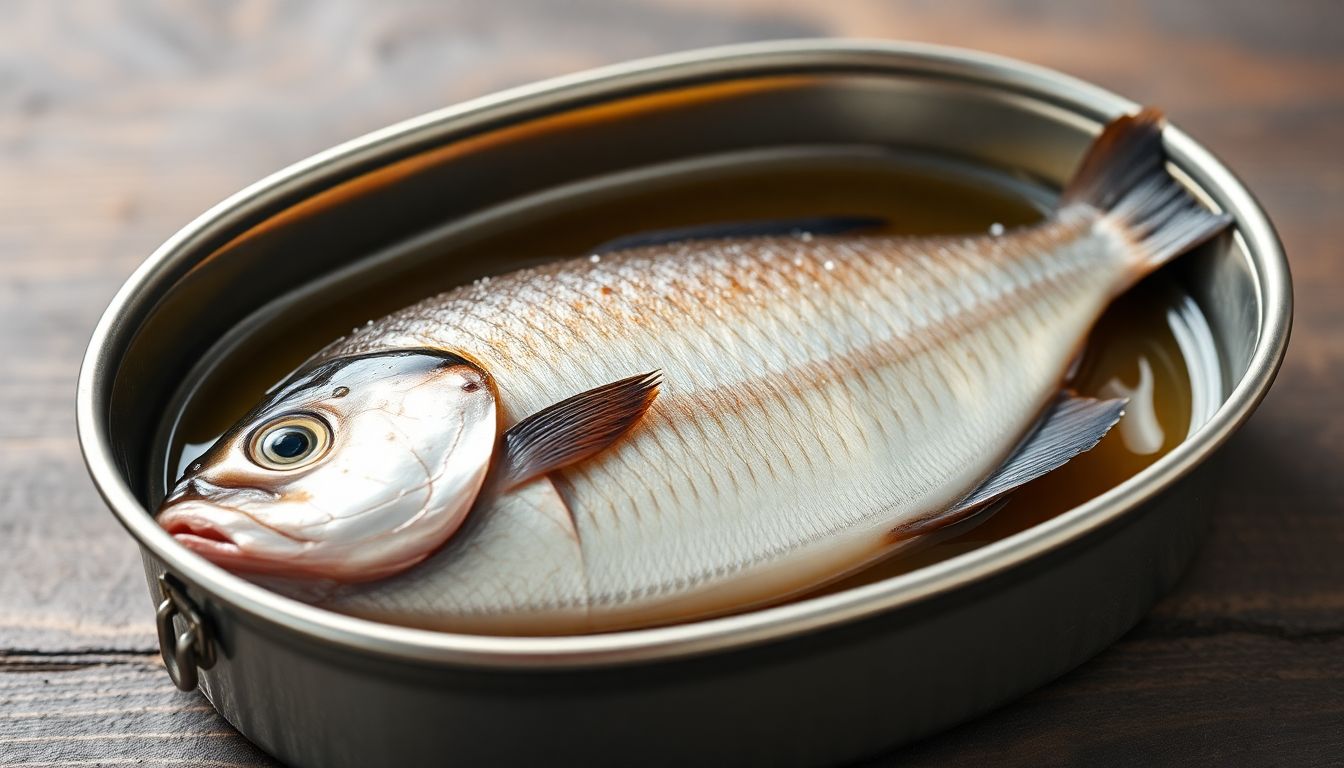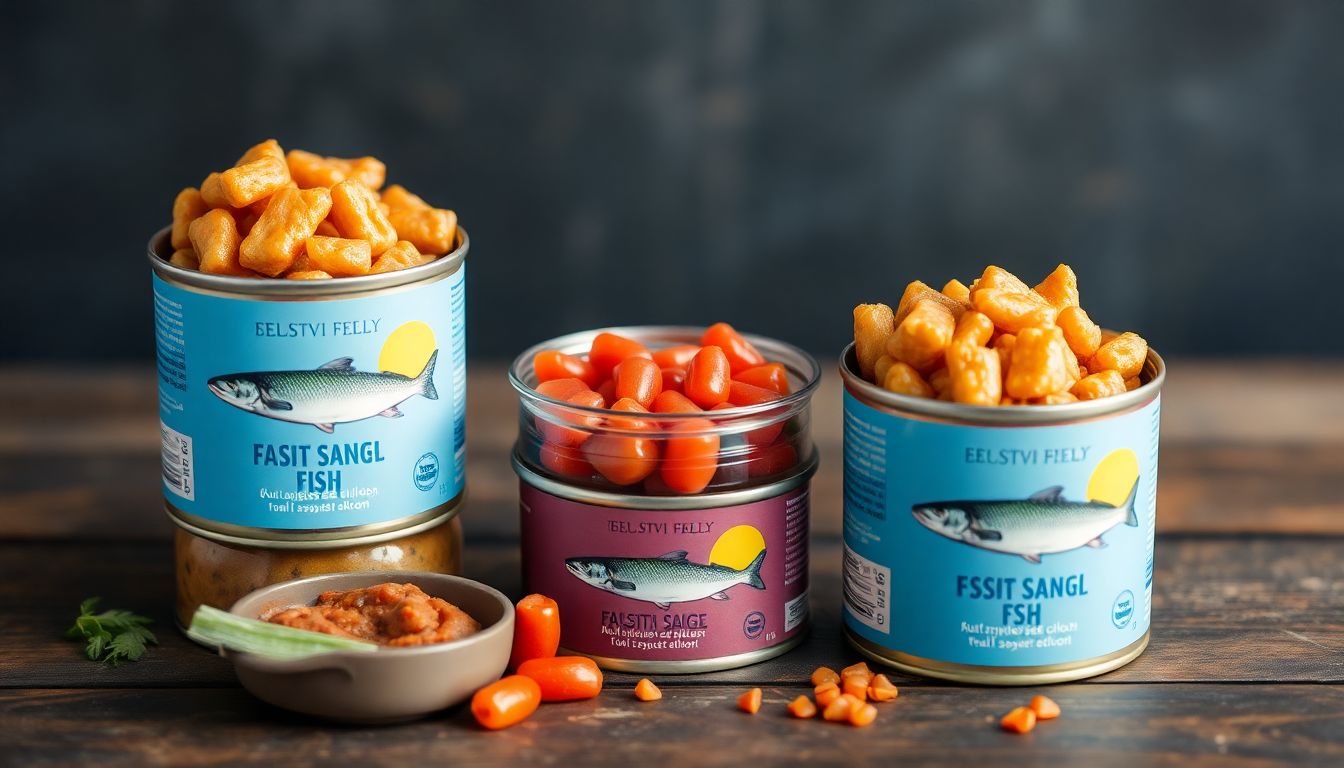In recent years, the humble can of fish has transcended its utilitarian roots to become a staple in the diets of health-conscious foodies and sustainability advocates alike. No longer relegated to the back of the pantry, tinned fish has emerged as a chic, convenient, and surprisingly sophisticated option for those seeking nutritious and delicious meals without breaking the bank. But as this trend continues to gain momentum, a pressing question arises: just how healthy are these salty, briny morsels?
Tinned Fish Health Insights
Discover how tinned fish can be a nutritious addition to your diet and learn about their health benefits.
– Tinned fish are rich in omega-3 fatty acids, protein, and essential vitamins, making them a healthy and convenient superfood option.
– They are generally low in calories and high in nutritional value, contributing positively to heart health and overall wellness.
– Enjoy easy recipes like tuna pasta bake and tinned fish tacos to incorporate these chic foods into your meals seamlessly.
Tinned fish: the new superfood?
Once a staple of wartime rationing and student budgets, tinned fish has undergone a remarkable transformation. Today, it is celebrated as a superfood, championed by chefs, nutritionists, and influencers who extol its virtues. This shift is not merely a result of clever marketing; it is grounded in the undeniable nutritional profile of tinned fish. High in protein and omega-3 fatty acids, low in pollutants, and often sustainably sourced, tinned fish checks many of the boxes for modern dietary needs.

Insider Tip: According to Chef José Andrés, “Tinned fish offers a depth of flavor and convenience that fresh fish sometimes cannot match. It’s a pantry staple in my home.”
The appeal of tinned fish lies not only in its nutritional benefits but also in its versatility. Whether it’s a can of sardines, mackerel, or tuna, these products can be incorporated into a wide array of dishes, from salads and sandwiches to pastas and casseroles. Furthermore, as more consumers seek sustainable and eco-friendly food options, tinned fish offers a responsible choice. Many brands now emphasize sustainable fishing practices, ensuring that the oceans remain healthy for future generations.
The benefits of tinned fish
The health benefits of tinned fish are manifold. Rich in omega-3 fatty acids, such as EPA and DHA, tinned fish supports heart health, reduces inflammation, and promotes brain function. These essential fats are crucial for maintaining overall health and are often lacking in modern diets. According to the American Heart Association, consuming fish twice a week can significantly reduce the risk of cardiovascular disease.

Moreover, tinned fish is a powerhouse of protein, providing all the essential amino acids needed for muscle repair and growth. For those on a budget, tinned fish offers an affordable alternative to fresh fish, without compromising on nutritional value. A can of tuna, for instance, can deliver 20 grams of protein per serving, making it an ideal choice for athletes and fitness enthusiasts.
Another significant advantage of tinned fish is its low mercury content compared to larger, predatory fish. Smaller fish like sardines and mackerel have shorter lifespans and consume less mercury-laden prey, resulting in lower contamination levels. This makes them a safer option, particularly for pregnant women and children.
Insider Tip: Nutritionist Dr. Jane Collins suggests, “Opt for tinned fish packed in water or olive oil, rather than brine or soybean oil, to maximize health benefits and minimize unnecessary sodium intake.”
Are tinned fish healthy?
The healthfulness of tinned fish extends beyond its nutrient profile. When considering the health impact of any food, it’s essential to examine the sourcing, processing, and packaging methods. Many tinned fish brands are committed to sustainable fishing practices, which not only protect marine ecosystems but also ensure the quality and safety of the product. Look for certifications like the Marine Stewardship Council (MSC) label to verify sustainable sourcing.

It’s also crucial to consider the additives and preservatives used in tinned fish products. Some canned fish may contain added salt or preservatives to enhance flavor and shelf-life. While these are generally safe in moderation, it’s advisable to check labels for sodium content, particularly for individuals with hypertension or those following a low-sodium diet.
Insider Tip: Dr. Mark Hyman, a wellness expert, advises, “Read labels carefully. Choose tinned fish with the fewest added ingredients to ensure you’re getting a clean, wholesome product.”
How to eat tinned fish
Incorporating tinned fish into your diet can be both simple and exciting. Its versatility makes it a great addition to a variety of dishes, adding not only a boost of flavor but also a nutritional punch. From salads and sandwiches to pastas and casseroles, tinned fish can enhance any meal.
For those new to tinned fish, starting with familiar dishes can ease the transition. Try adding tinned tuna to your favorite pasta or mixing sardines into a fresh green salad. For a quick and easy snack, spread mackerel on whole-grain crackers with a squeeze of lemon juice.

Insider Tip: Chef Anthony Bourdain once said, “Don’t be afraid to experiment with tinned fish. It’s a canvas waiting for your culinary creativity.”
Personal Experience with Tinned Fish
When I first encountered the idea of incorporating tinned fish into my diet, I was skeptical. Growing up in a household where fresh seafood was the norm, the thought of eating fish from a can seemed less appealing. However, during my college years, I faced the dual challenges of limited time and a tight budget. One evening, while rummaging through my pantry for something quick, I stumbled upon a couple of cans of sardines I had purchased on a whim.
Curious and hungry, I decided to experiment. I quickly sautéed some garlic and spinach, added the sardines, and tossed it all with pasta. To my surprise, this simple dish was not only delicious but also incredibly satisfying. I was amazed at how much nutrition packed into those small cans. Sardines are loaded with omega-3 fatty acids, vitamin D, and protein, which I desperately needed as a busy student.
This experience opened my eyes to the versatility and benefits of tinned fish. Since then, I have made it a staple in my diet. From quick lunches to hearty dinners, I have learned that tinned fish can be a nutritious, affordable, and convenient option. It has transformed my meals and made healthy eating accessible, proving that sometimes, the most unassuming ingredients can yield the greatest benefits.
Tinned fish recipes
1. Tuna pasta bake
A classic comfort food dish, tuna pasta bake is both hearty and delicious. Combine cooked pasta with tinned tuna, a creamy béchamel sauce, and a sprinkle of cheese. Bake until golden brown for a satisfying meal that the whole family will love.
2. Tinned fish tacos
For a fresh and zesty twist, try tinned fish tacos. Use tinned mackerel or sardines as the base, adding lime juice, cilantro, and avocado for a burst of flavor. Serve in soft corn tortillas for an authentic Mexican experience.
3. Mediterranean tuna salad
This vibrant salad combines tinned tuna with cherry tomatoes, olives, cucumbers, and red onion. Drizzle with olive oil and balsamic vinegar for a refreshing and nutritious meal, perfect for a light lunch or dinner.
4. Tinned fish on toast
A quick and easy snack, tinned fish on toast is a classic that’s hard to beat. Simply mash your chosen fish with a fork, add a squeeze of lemon, and spread on whole-grain toast for a crunchy, satisfying bite.
5. Tinned fish kedgeree
This flavorful dish combines tinned fish with rice, curry powder, and boiled eggs. A nod to British colonial cuisine, kedgeree is a warming and aromatic meal that’s perfect for brunch or dinner.

The bottom line
In conclusion, the rise of tinned fish as a chic, healthy food option is well-founded. With its impressive nutritional profile, environmental sustainability, and culinary versatility, tinned fish is a valuable addition to any diet. While it’s essential to choose products carefully and be mindful of additives, the benefits of tinned fish are clear.
Insider Tip: Dietitian Laura Thomas recommends, “Incorporate a variety of tinned fish into your diet to enjoy a wide range of nutrients and flavors.”
For those seeking a convenient, affordable, and nutritious way to boost their intake of omega-3s and protein, tinned fish is an excellent choice. As it continues to gain popularity, let’s embrace this pantry staple and explore the endless possibilities it offers in the kitchen.
Questions & Answers
Q.Are tinned fish a healthy choice for my diet?
A.Yes, tinned fish is a healthy option packed with nutrients.
Q.What nutritional benefits do tinned fish offer?
A.Tinned fish provides protein, omega-3 fatty acids, and vitamins.
Q.How can I incorporate tinned fish into my meals?
A.You can add tinned fish to salads, pasta, or eat it on toast.
Q.Who should consider eating tinned fish regularly?
A.Anyone looking for a convenient, nutritious protein source should try it.
Q.Are there any downsides to eating tinned fish?
A.Some tinned fish may have high sodium, so check the labels carefully.
Q.Why should I choose tinned fish over fresh fish?
A.Tinned fish is often more affordable and has a longer shelf life